Kentucky is more known for its industrial resources than gemstones, but that doesn’t mean it’s lacking in mineral diversity. That said, there are still some cool things for the intrepid rockhound to find even if they’re not interested in holding on to economically important minerals. There are even a few rarer things that pop up on occasion.
So, let’s get down to it and I’ll show you a few of the possibilities with our list to the rocks, minerals, and gemstones of Kentucky.
Minerals and Gemstones Found In Kentucky
1. Fluorite
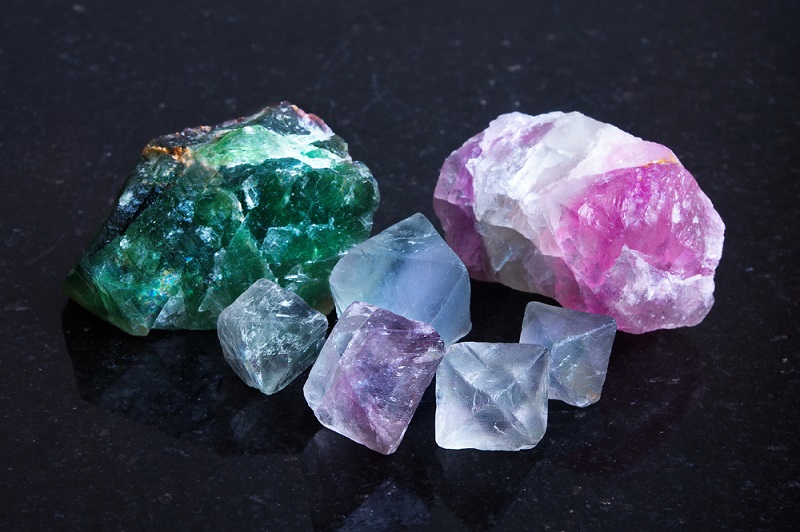
Fluorite is among the stones found in Kentucky, and the state actually has some great examples of it. Fluorite is a mineral comprised of CaF₂, or calcium fluoride. It comes in many different colors, and it’s among the most common stones for beginning rockhounds to purchase. Rainbow fluorite, a green and purple variant, is very common in the stone trade as it’s common, inexpensive, and beautiful.
Fluorite is important to some industries, but its main concern to us is as a collectible stone. Fluorite is quite soft, easily worked even with simple hand tools, so it’s not quite suitable for jewelry. On occasion, you’ll see faceted stones cut out of the material, mainly of the extremely rare color-changing variety. These are curiosities more than stones meant for setting.
In Kentucky the majority of fluorite that appears is purple. There are also gold and even deep blue specimens pulled from the earth in the Bluegrass State. Fluorite in this region is often found growing on other crystals, particularly calcite and barite. This leads to some world-class specimens when they are formed properly.
For those interested, the following regions host dozens of places to find fluorite:
- Northeast of Paducah
- Area around Lexington, particularly Soutwest
- North of Elizabethtown
There are numerous known hot spots in each of these regions, so just find some public land and take a look!
2. Agate/Jasper/Chalcedony
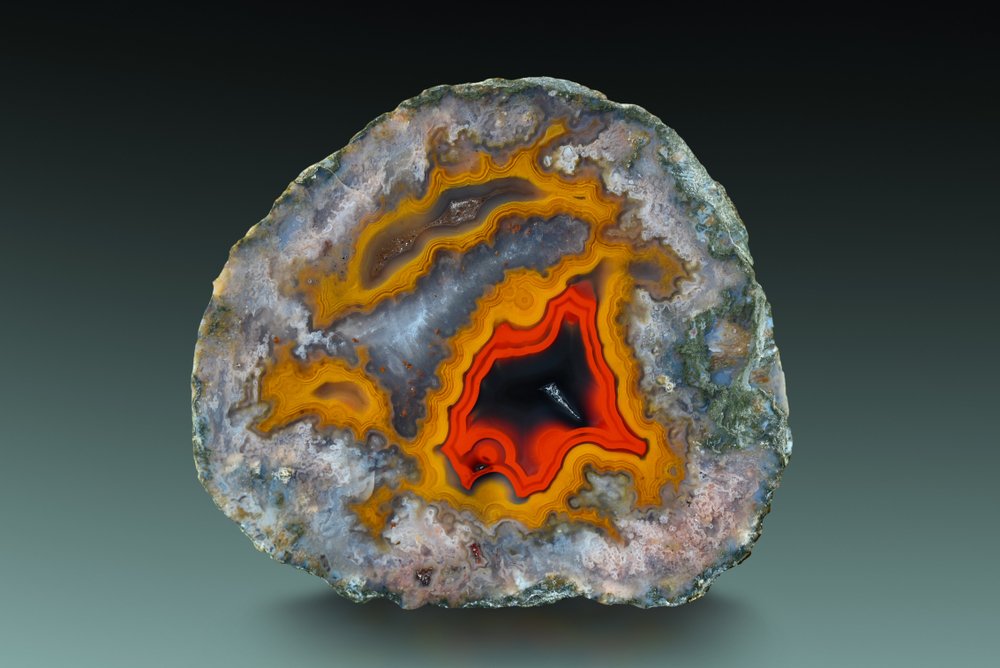
The cryptocrystalline silica varieties can be found across the entire range of North America. Whether it’s been moved into alluvial deposits by glaciers, eroded from limestone on the coasts, or even formed as seams in other stones… it’s present. I tend to lump all three together to avoid debates about which exact classification each subtype falls under.
Kentucky’s official state rock is agate, so you know that there’s some great stuff hiding. In particular, Kentucky has its own variety of agate. As counterintuitive as it sounds its most often simply called Kentucky Agate. These stones feature dense chalcedony colored with black and red, creating a very impressive spectacle.
Looking for them is simple. Find a waterway or a location that previously held one and start looking. In certain parts of Kentucky, you can also find places to dig that have a good chance of producing a few Kentucky Agates for your own personal collection. There are also occasional reports of botryoidal chalcedony being found in the state.
The aptly named Kentucky Agate District is one of the best places to start, and the following counties are all known to host them:
- Jackson County
- Lee County
- Powell County
As always, the first step is just to get outside and start looking!
3. Freshwater Pearls

They’re not technically a mineral or a rock, but freshwater pearls are the state gem of Kentucky so they deserve a mention. Freshwater pearls are produced by mollusks in certain regions of the state, primarily freshwater mussels. They’re comprised of calcium carbonate, the same mineral found in aragonite and calcite but lack a crystalline structure.
Pearls are another handy animal defense mechanism that humans have decided is economically viable. They’re formed when a particle gets trapped inside a mussel, whose body reacts in a biochemical way. The pearl is formed of layers of nacre, a non-crystalline calcium carbonate formation, built on top of each other as a way to seal the seed from damaging the vulnerable interior of the animal.
Freshwater pearls are also cultivated, where a larger seed made of something like plastic is used to create the interior of the pearl. Perfectly round freshwater pearls are very rare, most of them end up being either oblong or in odd shapes instead. They’ve been in use since their discovery early in US history.
They can be found in the Tennesee River Valley and the Mississippi River Valley. I suggest a local guide if you’re interested in collecting, as it falls outside of the normal realm of rockhound activities.
4. Coal

Coal is an incredibly important mineral, despite it’s somewhat faded provenance in current times. It was the fuel for the engine of the Industrial Revolution, providing the power needed to power early machinery and locomotives. It’s hard to overstate its importance to where our world currently is.
From steel creation to power generation, coal has had a place with humanity for a long time. Kentucky is known to host a lot of it, being the fourth largest producer in the United States. There are many different grades of coal, including those like anthracite which can be cut as gemstones, but the coal found in Kentucky is largely of the bituminous variety.
Bituminous coal is mid-grade coal. It ends up being a black, tarry lump that burns readily and provides a surprising amount of thermal energy for its size. This coal isn’t the most collectible mineral on the planet. It’s its importance to industry that has it so vaunted.
The majority of coal in the state is extracted in Harlan County and Floyd County. That’s where you’d want to head if you’re looking to learn more about the black stuff in person.
5. Quartz
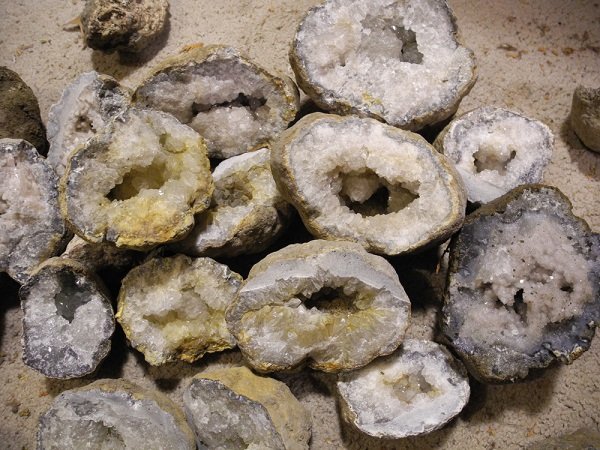
Quartz is among the most common stones on the planet, and it’s certainly the most common macrocrystalline specimen found. Quartz serves as the archetype of crystals to many people. Its hexagonal sides, often with only a single termination, are visual shorthand for “crystals” in everything from toys to comic books to video games. We even call large pieces of it “rock crystal” with no further explanation necessary.
Quartz is comprised of silica, which forms together slowly over time to create large crystalline structures. It’s the most common larger form of crystalline silica, although the polymorph moganite is often found intermixed in micro and cryptocrystalline quartz. Moganite doesn’t appear in nature alone often enough to be of concern for the majority of collectors.
Quartz in Kentucky isn’t in the famous points or clusters most of the time. Instead, it’s found in geodes, often intermixed with calcite. These aren’t the most visually impressive geodes in the Union, but there are some great samples found. Small crystals of smoky quartz sometimes appear as well. You can also find “river quartz” which is usually badly formed examples that have been tumbled in a river for extended periods. These often bear orange hematite stains.
The following places are good to look for quartz:
- Adair County
- Lyon County
- Mount Vernon
But other places across the state do bear some amount of the precious crystalline mineral.
6. Pyromorphite
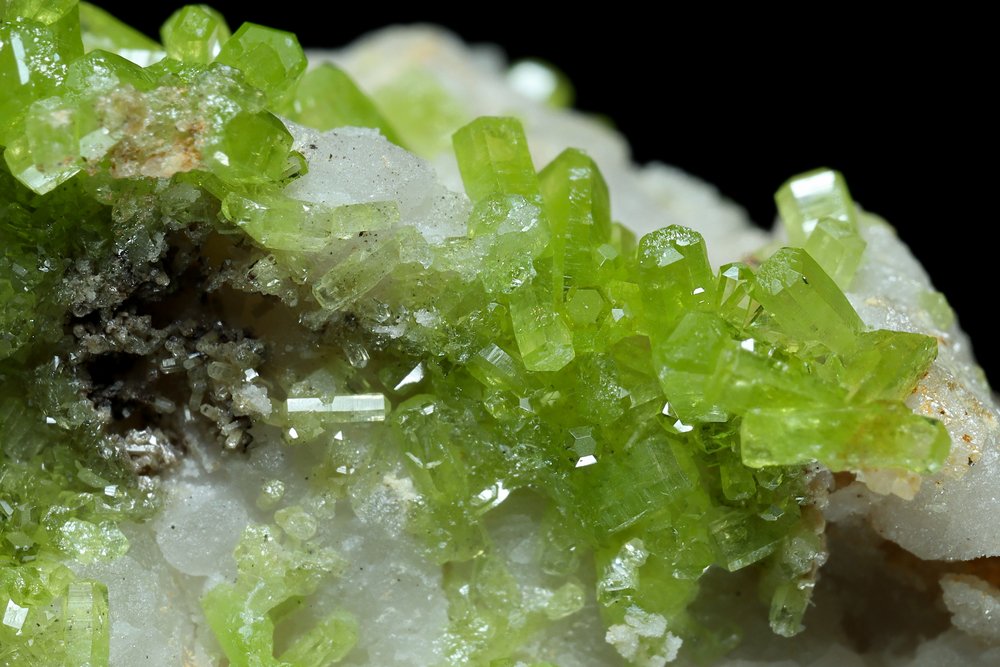
Pyromorphite is a lead chlorophosphate mineral that’s rarely found in some areas, including one part of Kentucky. It usually appears as a brown to green mineral, with hexagonal crystals that have a flat termination. It’s almost indistinguishable from two other minerals in its series, mimetite, and vanadinite.
Pyromorphite can be used for lead production but isn’t used on a regular basis. Instead, it’s usually collected as crystalline samples to be sold to mineral collectors who value it for it’s unique form and coloration. The best samples are lime green with delicate crystals.
Kentucky’s pyromorphite samples are top-notch for the most part, usually bright green and often with delicate crystals. Significant finds of pyromorphite are highly sought after, and they’re valuable in addition to being beautiful. Where found they’re a common thing for collectors to hunt for.
Pyromorphite is found in only a couple of places in Kentucky. If you’re eager to hunt down your own you’ll want to start searching Southeast of Sheridan at the Big Four Fault. Some samples are also found in the Dike Eaton area.
7. Galena
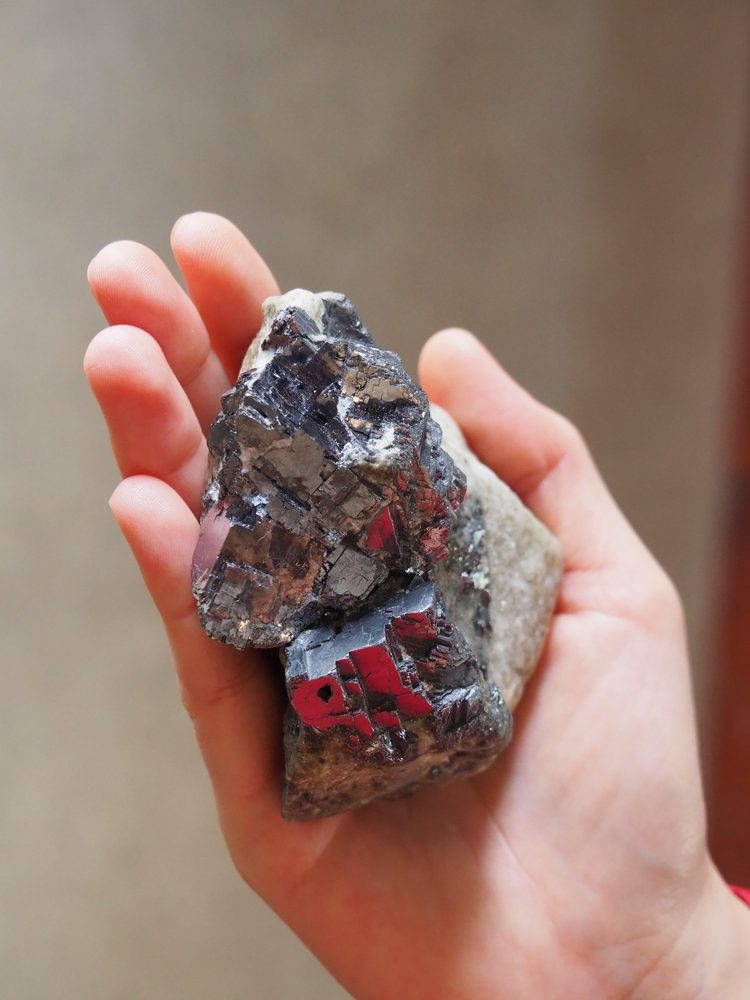
Galena is a lead ore that’s commonly seen in industrial use. It’s found in many places across the United States and has been exploited for its properties since it was discovered in the US. Galena is most often seen as black, shiny, cubic crystal masses. While mainly seen in industrial use there’s also a thriving collector’s market for it.
Galena is sometimes found with silver trapped inside. In many cases, this can add up to a significant amount of precious metal in addition to the lead normally extracted from the mineral. This silver-bearing galena is usually referred to as “argentiferous” to describe it’s nature.
Kentucky galena is only occasionally argentiferous. Most of it comes from the lead-zinc deposits that run across a huge part of the United States which don’t bear silver often. Argentiferous galena is usually produced by hydrothermal activity. Instead, in these formations, you’ll find galena is closely associated with the zinc-ore sphalerite and has essentially married the production of zinc and lead in this part of the world.
The following regions are known to house good galena samples:
- Crittenden County
- Cumberland County
- Fayette County
These places are a good spot to start, just be careful about getting near any old or current mines.
8. Hemimorphite
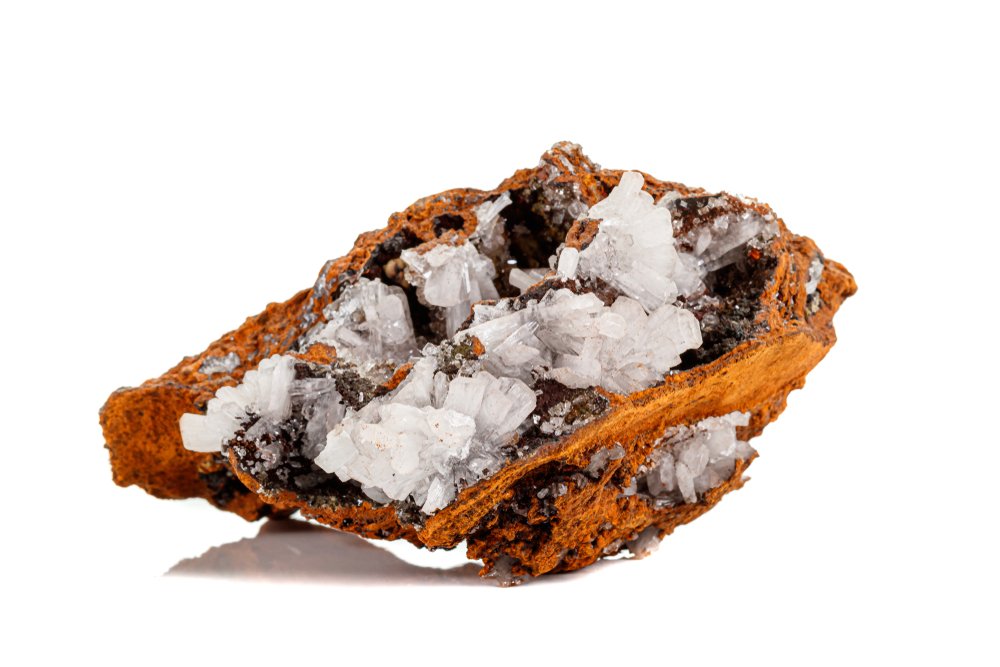
Hemimorphite is a zinc-bearing mineral that’s found in many parts of the zinc-lead belt. It’s a zinc silicate mineral, with a white, yellow, green, or blue color. It’s actually a side effect of the oxidation of the zinc-bearing ore sphalerite. It mainly occurs in the upper layers of the zinc-rust belt where the mineral was exposed to oxygen.
Because of its rich, zinc-bearing nature hemimorphite is an important zinc ore. It can contain up to 54.2% zinc by weight. In the past, you’ll see references to calamine, which is an older name for the mineral. It’s found in many places across the world, often with wildly varying characteristics depending on the region.
The samples found in Kentucky are generally of the white variety, although green ones are found on occasion. Unfortunately, the bright blue that some collectors associate with the mineral simply doesn’t occur here, and you’d be hard pressed to find a solid blue sample anywhere in the United States. The majority of the turquoise-colored material seems to come from China.
If you’re looking for hemimorphite then you’ll want to try anywhere that galena and sphalerite are known to be present in the upper layers. Since the mineral is essentially only oxidized sphalerite it’s simple to locate regions where it may be present. It’s still a bit of a rarity, so it may be best to just consider it a side catch of the more popular galena and sphalerite specimens.
9. Celestine
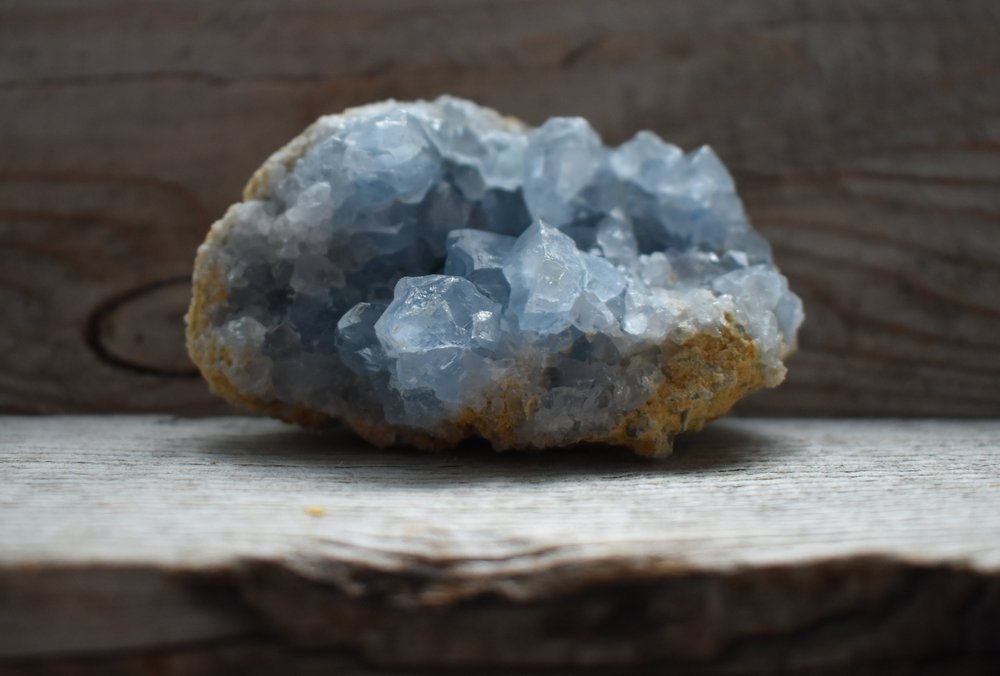
Celestine is a fairly rare mineral, a crystalline form of strontium sulfate. It’s the main source of the metal strontium, which is used for a few purposes. The main purpose it’s used for these days is simple: strontium salts burn with vivid crimson color and they’re invaluable to the pyrotechnics industry. Mining has declined since the previous main use, X-ray mitigation in cathode ray tubes, is no longer relevant.
Celestine is most often seen as a white crystal, often in geode-like nodules. The most attractive variations bear a light blue color, but this is actually due to impurities and not a feature of the mineral itself. The vast majority is still clear or white, with only rare samples and specific regions producing the blue form of the mineral.
The world’s largest geode is actually a celestine geode. That would be Crystal Cave in Ohio. In Kentucky, on the other hand, you’re mostly looking at smaller samples with a white color. While not the most fascinating form of the mineral they’re still worth collecting if you’re in the area.
The majority of celestine in the state is found in the following counties:
- Shelby County
- Lincoln County
- Meade County
Road cuts are often the source of this mineral, try back roads in those regions where you’re unlikely to be interrupted and you may be able to score yourself a sample.
- Online rock and mineral club for collectors of all levels!
- Find community with like-minded rock and mineral enthusiasts.
- Monthly Giveaways!
- Free Access to Entire Digital Library of Products (current and future products)*


